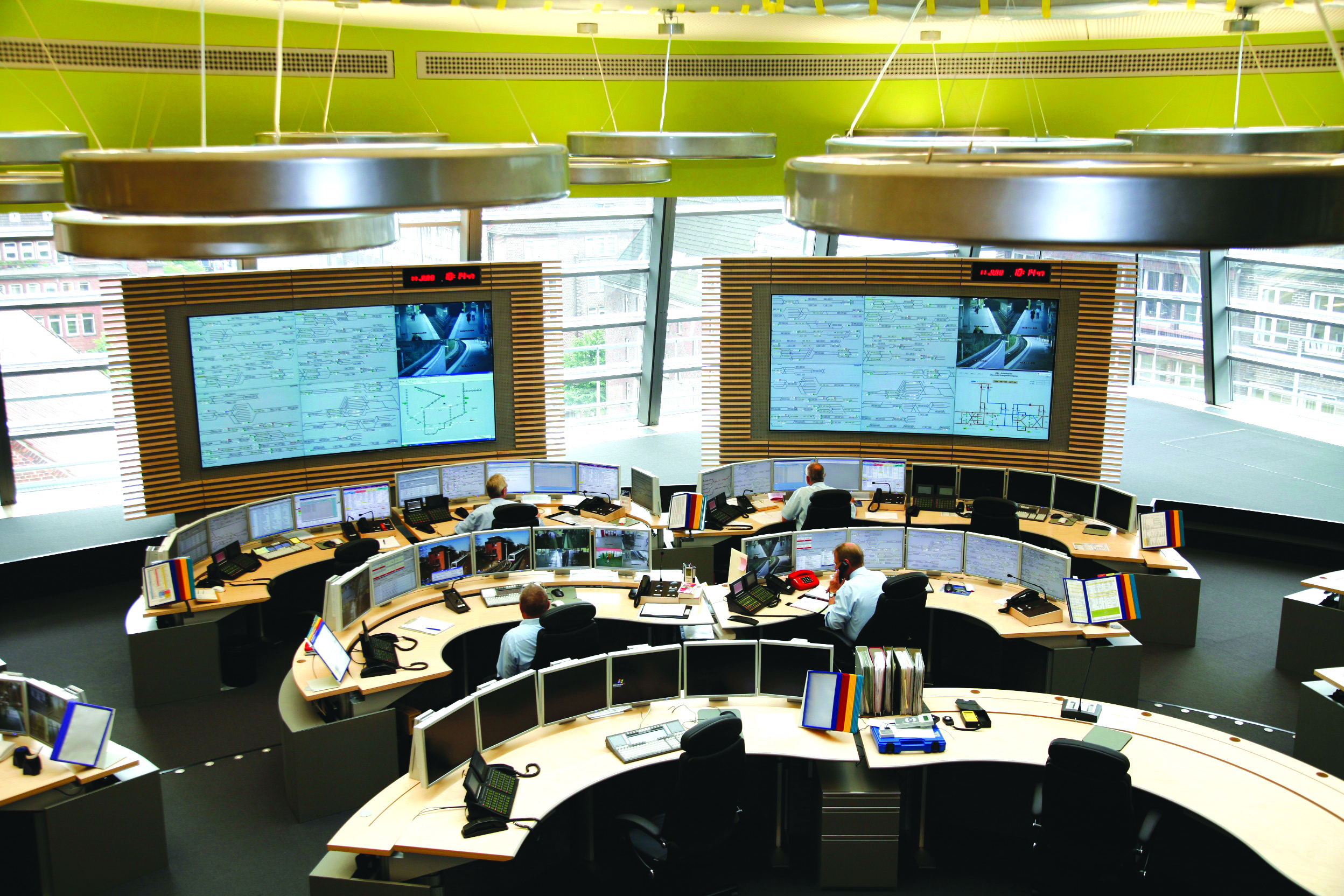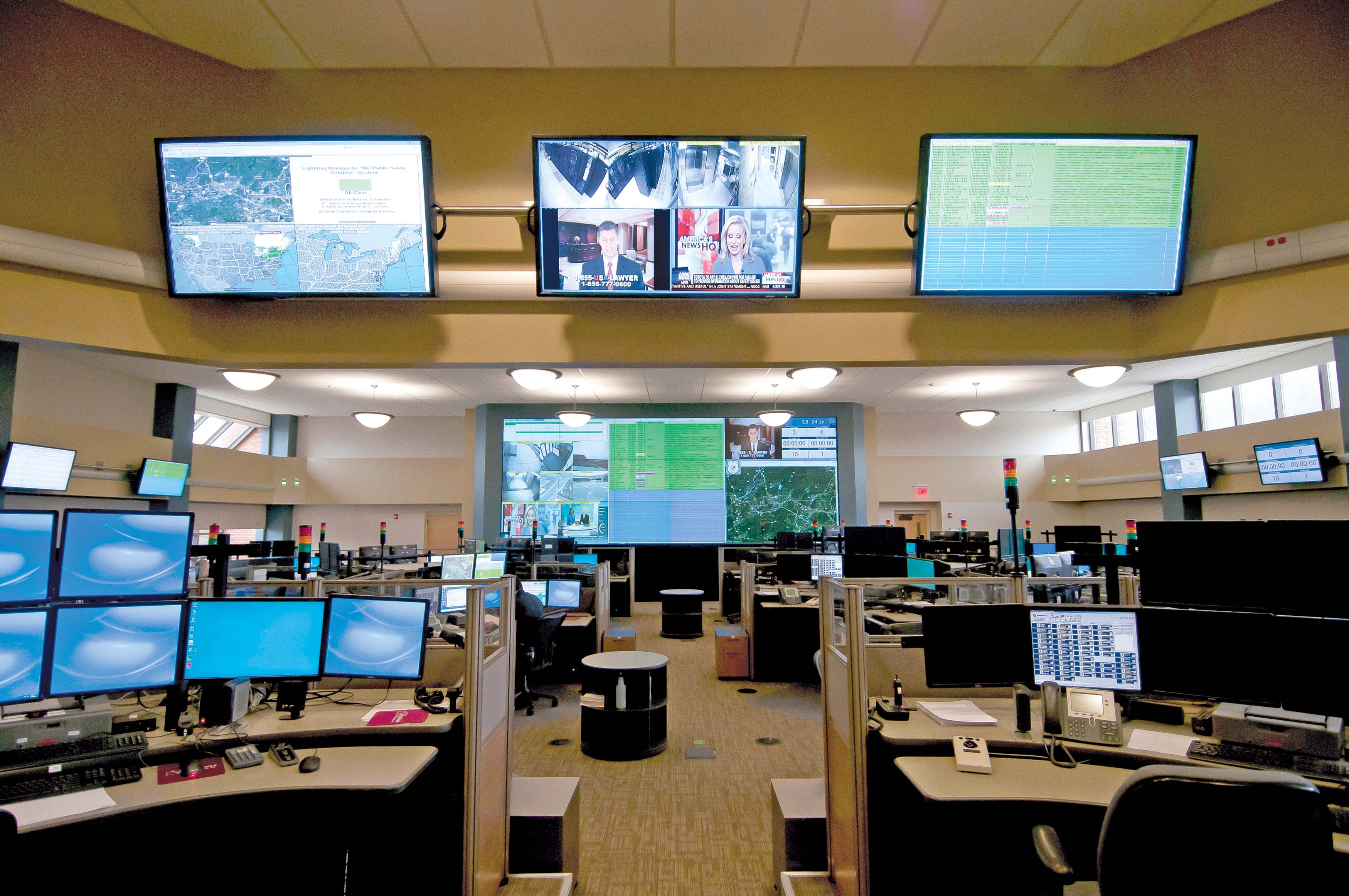
As IP-based technology makes its presence felt in the control room sector, it makes for greater economies of scale and also offers a migration path for many other traffic management technologies. So says Barco's Guy Van Wijmeersch
Efficient control room collaboration and decision-making is only possible if operators and decision-makers have easy and timely access to information. In many cases, that information also needs to be accessible to multiple users at the same time. This is certainly so in the case of a multi-agency approach to infrastructure management, where information is shared across jurisdictions and organisations in order to realise improvements in overall safety and operations.Internet Protocol (IP) network technology is rapidly becoming the backbone of all business operations. It also offers the ideal platform for network visualisation and monitoring and is making its presence felt in the control room/Traffic Management Centre (TMC) environment.
"Operationally, it allows content from all information sources to be distributed both inside and outside the TMC," says Guy Van Wijmeersch, director solutions and services at
"Having such a complete IP-based backbone allows a video network to be dedicated to the TMC only, or there can be an open-office environment where both push and pull strategies can be implemented. The TMC can push information out to relevant parties, and they in turn can pull from the TMC the information they need."
The distributed architecture of networked visualisation enables video content to be captured once and distributed and displayed as many times as required in any location.
Breaking down barriers
Traditionally, visualisation systems have been built using industry-specific, often proprietary systems requiring specialist skills and expertise. Control rooms required a variety of input cards, for example for analogue video, RGB and DVI computer signals. These are collected and then distributed using dedicated Audio-Visual (A/V) routers and cabling to multiple screens in the control room and outside. This kind of system is not only costly to build, it is also difficult and costly to reconfigure whenever changes are needed.Networked visualisation breaks down the traditional A/V equipment functionality and enables complete solutions to be built using intelligent displays, high-performance encoders/decoders, and management and control software built on industry-standard IT infrastructures. This enhances the flexibility, scalability and reach needed in today's multi-agency control room environments at significantly lower cost. There is no limit on numbers of inputs or outputs.
"IP is very scaleable," Van Wijmeersch continues. "And it offers considerable cost advantages as it doesn't scale up nearly as high or as fast as traditional video solutions; if one takes a HD-quality video matrix with 60 to 100 or more inputs, the cost saving can be as great as 70 per cent.
"From an interoperability perspective, an open-standard system allows standard video compression techniques to be applied. That means a TMC can take in video from all types of sources and vendors; having interoperability based purely on video standards also makes transcoding much easier. That can be used for scaling - for instance, you can go from full-quality displays on a video wall to thumbnails on a laptop or nomadic device. Open compression standards also make it possible to interchange full desktops, even external to the TMC, without a loss in quality. Certain rules, such as access privileges, have to be observed when exchanging between different agencies but those rules are widely known and there are no real issues as a result."
Van Wijmeersch says that Barco first observed this technology emerging in the broadcast sector about three to four years ago and then watched it progress into the traffic surveillance and utilities sectors. The trend, he notes, will soon develop into a formal architecture/platform, support being such from the A/V world and large customers. That is combining with easier access to high-level equipment, such as Cisco routers and the like which are becoming less expensive and allowing more performance to be derived from video, to create a whole new 'ecosystem'.
Unsurprisingly, the major control room system manufacturers have all caught the wave. Barco distinguishes itself, according to Van Wijmeersch, by offering a complete chain of products, both its own and those of partners, which allow different encoder/decoder solutions and different keyboard/mouse capabilities.
Intuitive collaboration
A further differentiator, he continues, is CMS - Barco's Control Room Management Suite - which "allows very intuitive collaboration between different players".In combination with large-screen video wall displays, control room management software improves overall situational awareness as it allows operators to preview multiple sources and combine these sources into new perspectives, thereby generating new knowledge.
For example, collaboration software allows operators to send personalised views to any video wall, small display or PC with pre-approved access, either in the same room or remote. These views can be shared privately with other operators or supervisors for collaboration or approval and then pushed on to more public group display walls locally or at remote locations.
"Open architectures allow displaced controllers and hardware to run on different systems. That's especially important when one looks to differentiate trends in, for instance, Urban Traffic Control (UTC)," Van Wijmeersch continues.
"The 'dream' of UTC is high automation. That would suggest the need for fewer TMCs as road networks would get on and run themselves. And, indeed, when things do run smoothly there is no requirement for a TMC. However, when things go wrong very fast decision-making is needed.
"CMS helps there, with the exchange of often very visual data which allows management of the same incident by different stakeholders. Even with multiple smaller sites you're going to need management and the solution works at a very high level providing a visual element. That's especially applicable in the traffic or incident management environments, where there are potentially lots of agencies and emergency services involved."
IP: a migration tool
IP also provides network owners and managers with a convenient and relatively uncomplicated migration path for their technologies.Van Wijmeersch: "It's perfectly possible to take in legacy systems and feeds and put them onto an IP network.
"When it comes to upgrading a system, be it for traffic management, utilities management or some other application, the most expensive route is installing a new platform. But you can achieve a smooth transition by going down the IP route.
"In the processing environment, there is some software and hardware which has been in use for over 20 years, it only tends to get touched when it 'dies'. The number of legacy Unix-based systems still out there is evidence of that.
"Migration using IP means that you don't have to touch the core, just the visualisation elements. So, for example, you might transcode the RGB sources and bring them inside the TMC using IP.
"The control room, or TMC, is the first place that things can come together without an initial high cost. Collaboration is very scaleable - you can start with a small TMC and scale massively if required. From a UTC perspective, going to a new platform can be prohibitively expensive - especially once one looks to migrate data. IP-based visualisation makes it possible to bring lots of information together without the need for a new system. So as an entry step, it makes sense to improve a network from the control room environment outwards."
Multi-agency working - the state of the art
Van Wijmeersch points to the McConnell Public Safety and Transportation Operations Center (MPSTOC) in Fairfax, Virginia, US as an example of the state of the art in multi-agency cooperation. The 114,000 square foot MPSTOC was built and designed to house: the Fairfax County Department of Public Safety Communications (a 911 call centre including police and fire service dispatch); the Fairfax County Office of Emergency Management (including the county's Emergency Operations Center); the Virginia Department of State Police Division Seven communications centre and the Virginia Department of Transportation's (VDOT) operations centre. A/V consultancy Polysonics designed the facility which features six rear-projection video walls with DLP technology. At the operations floor, five large video walls display information to the Police (two 2x2 67in cube walls) and Fire and Rescue (two 2x2 67in cube walls) dispatch personnel and the VDOT operators (one 2x5 80in cube wall). The Emergency Operations Center (EOC) has a very large wall consisting of 10 2x5 80in cubes.
"The functional areas each have their own control and display systems but they also have visibility of other agencies' operations," says Van Wijmeersch. "The EOC will accommodate 150 operatives and it can immediately take over all content from the different operations areas. Besides the technology, there are other innovations. For instance, once in the EOC operatives work in high-visibility jackets with their functions written on their back, so individuals' roles can be defined very quickly.
"The MPSTOC is also equipped with complete broadcast facilities. This includes allotted vehicle parking such that during times of emergency outside broadcast vehicles from local cable companies and other media can be supplied with direct feeds from the operations centre.
At the strategic level, he continues, there is a definite shift towards bringing agencies together and the technology has evolved to reflect that.
"There are also moves to consolidate individual agencies' operations. In Sweden, for instance, Barco is currently working on connecting the operations centres of the fire brigade through CMS. The fire departments of the major cities of Sweden have chosen this solution because of its cost-efficient scaleabity and proven performance. The deployment of the project started in 2006 and is continuing to include more centres at both the local and regional levels.










